Do you have a question about the Chamberlain 1120E-1/2HP and is the answer not in the manual?
Ensures safe operation by checking door balance, safety reverse system, force limits, control placement, and manual release procedures.
Covers personal safety (clothing, entanglement, locks), electrical safety (wiring, grounding), and material safety (door reinforcement).
Details key features like opener lights, manual disconnect, safety system, and easy limit adjustment for user convenience.
Provides essential technical details including motor, drive mechanism, safety features, and dimensions of the opener.
Lists the necessary hand tools for assembling and installing the garage door opener.
Illustrates the setup for sectional garage doors, including header bracket and trolley placement.
Illustrates the setup for one-piece garage doors, including header bracket and trolley placement.
Diagram showing the installation of the opener on a sliding gate system.
Diagram showing the installation of the opener on a swinging gate system.
Instructions for correctly joining the T-rail sections to ensure proper alignment and trolley movement.
Guidance on securely fastening the chain pulley bracket to the front end of the T-rail.
Guides header bracket placement for sectional and one-piece doors, considering clearance and door type.
Details for installing the header bracket using jamb hardware on one-piece doors.
Details for installing the header bracket using pivot hardware on one-piece doors.
Securely attach the header bracket to the wall using lag screws and pilot holes as per instructions.
Securely attach the header bracket to the ceiling using lag screws and pilot holes as per instructions.
Connect accessories and understand the operation of the door control panel, including its features.
Detailed steps for making a permanent electrical connection to the opener, adhering to local codes.
Procedure to adjust the UP limit screw for one-piece doors to set the fully open position.
Procedure to adjust the DOWN limit screw for one-piece doors to set the fully closed position.
Increase UP travel limit if the door does not open completely or at least 1.5m.
Decrease DOWN travel limit if the opener reverses when the door is fully closed.
Check if the door reverses halfway through closing; adjust DOWN force if it doesn't reverse normally.
Check if the door stops halfway through opening; adjust UP force if it doesn't stop easily.
Procedure to manually open or close the door using the red release handle.
Engages the lockout feature to prevent automatic trolley reconnection for manual door control.
Highlights the importance of checking and adjusting limit, force, and safety reverse system settings.
Emphasizes that the safety reverse system is crucial for preventing severe injury or death from closing doors.
Outlines monthly maintenance checks and biannual tasks like chain tension inspection.
Diagnoses and solves issues where the opener fails to respond to controls or the remote.
Provides solutions for doors that do not open fully, involving force or limit adjustments.
Addresses unexpected door reversals by checking for obstructions, balance, or setting issues.
Troubleshoots openers that hum but do not operate, checking for locks or motor phase issues.
A detailed list of all parts for the opener assembly, including part numbers and descriptions.
Ensures safe operation by checking door balance, safety reverse system, force limits, control placement, and manual release procedures.
Covers personal safety (clothing, entanglement, locks), electrical safety (wiring, grounding), and material safety (door reinforcement).
Details key features like opener lights, manual disconnect, safety system, and easy limit adjustment for user convenience.
Provides essential technical details including motor, drive mechanism, safety features, and dimensions of the opener.
Lists the necessary hand tools for assembling and installing the garage door opener.
Illustrates the setup for sectional garage doors, including header bracket and trolley placement.
Illustrates the setup for one-piece garage doors, including header bracket and trolley placement.
Diagram showing the installation of the opener on a sliding gate system.
Diagram showing the installation of the opener on a swinging gate system.
Instructions for correctly joining the T-rail sections to ensure proper alignment and trolley movement.
Guidance on securely fastening the chain pulley bracket to the front end of the T-rail.
Guides header bracket placement for sectional and one-piece doors, considering clearance and door type.
Details for installing the header bracket using jamb hardware on one-piece doors.
Details for installing the header bracket using pivot hardware on one-piece doors.
Securely attach the header bracket to the wall using lag screws and pilot holes as per instructions.
Securely attach the header bracket to the ceiling using lag screws and pilot holes as per instructions.
Connect accessories and understand the operation of the door control panel, including its features.
Detailed steps for making a permanent electrical connection to the opener, adhering to local codes.
Procedure to adjust the UP limit screw for one-piece doors to set the fully open position.
Procedure to adjust the DOWN limit screw for one-piece doors to set the fully closed position.
Increase UP travel limit if the door does not open completely or at least 1.5m.
Decrease DOWN travel limit if the opener reverses when the door is fully closed.
Check if the door reverses halfway through closing; adjust DOWN force if it doesn't reverse normally.
Check if the door stops halfway through opening; adjust UP force if it doesn't stop easily.
Procedure to manually open or close the door using the red release handle.
Engages the lockout feature to prevent automatic trolley reconnection for manual door control.
Highlights the importance of checking and adjusting limit, force, and safety reverse system settings.
Emphasizes that the safety reverse system is crucial for preventing severe injury or death from closing doors.
Outlines monthly maintenance checks and biannual tasks like chain tension inspection.
Diagnoses and solves issues where the opener fails to respond to controls or the remote.
Provides solutions for doors that do not open fully, involving force or limit adjustments.
Addresses unexpected door reversals by checking for obstructions, balance, or setting issues.
Troubleshoots openers that hum but do not operate, checking for locks or motor phase issues.
A detailed list of all parts for the opener assembly, including part numbers and descriptions.
| Type | Chain Drive |
|---|---|
| Horsepower | 1/2 HP |
| Remote Control | Yes |
| Speed | 7 inches per second |
| Security | Rolling code technology |
| Battery Backup | No |
| Motor Warranty | Lifetime |
| Max Door Height | 7 ft |
| Safety Features | Safety sensors |
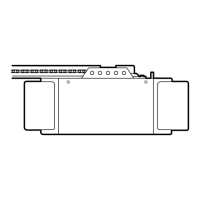
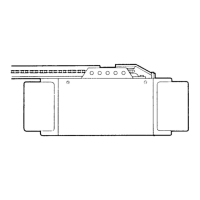

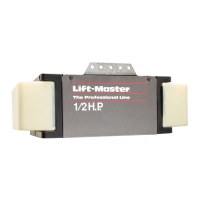
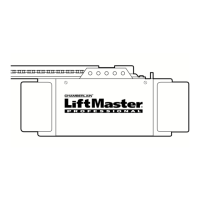
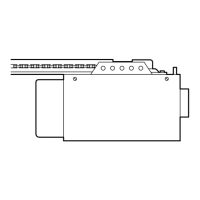
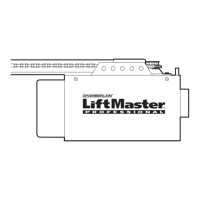



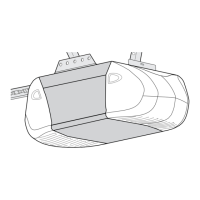
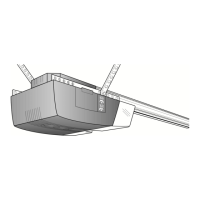
